-
 Bitcoin
Bitcoin $108,017.2353
-0.81% -
 Ethereum
Ethereum $2,512.4118
-1.58% -
 Tether USDt
Tether USDt $1.0002
-0.03% -
 XRP
XRP $2.2174
-1.03% -
 BNB
BNB $654.8304
-0.79% -
 Solana
Solana $147.9384
-1.76% -
 USDC
USDC $1.0000
-0.01% -
 TRON
TRON $0.2841
-0.76% -
 Dogecoin
Dogecoin $0.1636
-2.09% -
 Cardano
Cardano $0.5726
-1.72% -
 Hyperliquid
Hyperliquid $39.1934
1.09% -
 Sui
Sui $2.9091
-0.59% -
 Bitcoin Cash
Bitcoin Cash $482.1305
0.00% -
 Chainlink
Chainlink $13.1729
-1.54% -
 UNUS SED LEO
UNUS SED LEO $9.0243
-0.18% -
 Avalanche
Avalanche $17.8018
-1.90% -
 Stellar
Stellar $0.2363
-1.69% -
 Toncoin
Toncoin $2.7388
-3.03% -
 Shiba Inu
Shiba Inu $0.0...01141
-1.71% -
 Litecoin
Litecoin $86.3646
-1.98% -
 Hedera
Hedera $0.1546
-0.80% -
 Monero
Monero $311.8554
-1.96% -
 Dai
Dai $1.0000
-0.01% -
 Polkadot
Polkadot $3.3473
-2.69% -
 Ethena USDe
Ethena USDe $1.0001
-0.01% -
 Bitget Token
Bitget Token $4.3982
-1.56% -
 Uniswap
Uniswap $6.9541
-5.35% -
 Aave
Aave $271.7716
0.96% -
 Pepe
Pepe $0.0...09662
-1.44% -
 Pi
Pi $0.4609
-4.93%
How to set up my GPU rig to connect to a mining pool?
Connect your GPU rig to a mining pool using compatible software like NiceHash or Claymore, configure pool details and wallet address, then monitor performance and earnings via the pool's dashboard.
Jul 05, 2025 at 11:57 pm
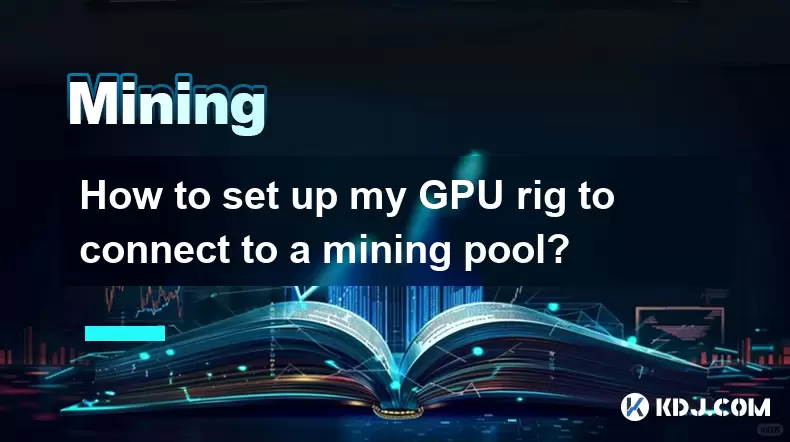
Understanding the Basics of Mining Pool Connection
Before diving into the technical steps, it's essential to understand what a mining pool is and how it functions. A mining pool is a group of miners who combine their computational resources to increase the probability of solving a block and earning rewards. When you connect your GPU rig to a mining pool, you're essentially joining forces with other miners to share the workload and distribute the rewards proportionally based on contributed hash power.
To begin the setup, ensure that your GPU rig is fully operational, equipped with compatible mining software, and connected to a stable internet source. Choosing the right mining pool is also crucial, as different pools support various cryptocurrencies and offer different payout structures. Popular options include F2Pool, Slush Pool, and MiningPoolHub, among others.
Selecting Compatible Mining Software
The next step involves selecting and installing the appropriate mining software for your GPU model and the cryptocurrency you intend to mine. Some of the most widely used mining applications include:
- NiceHash Miner – ideal for beginners due to its user-friendly interface and auto-detection of hardware.
- Claymore’s Dual Miner – supports Ethereum and other altcoins with dual mining capabilities.
- PhoenixMiner – known for high performance and efficiency when mining Ethereum-based coins.
- EWBF Cuda Zcash Miner – optimized for NVIDIA GPUs and Zcash mining.
Make sure to download the latest version from the official website or trusted sources to avoid malware or corrupted files. Once downloaded, extract the contents to a dedicated folder on your system for easy access.
Configuring Your Mining Software
After installation, configuring the mining software is critical. Most mining applications rely on configuration files (usually in .bat or .conf formats) where you input your mining pool details and wallet address. Here’s how to do it:
- Open the extracted mining software folder.
- Locate the
.batfile corresponding to the coin you want to mine. - Right-click the file and choose Edit to open it in Notepad or another text editor.
- Replace the placeholder pool address with the actual server address of your chosen mining pool.
- Input your wallet address in the designated field to ensure payouts are sent correctly.
- Set the worker name if required by the pool; this can be any identifier like "rig1" or "worker001".
- Save the changes and close the editor.
Double-check all inputs to prevent misdirected earnings or rejected shares due to incorrect worker credentials.
Connecting to the Mining Pool
With your mining software properly configured, it’s time to establish a connection to the mining pool. Follow these steps:
- Double-click the edited
.batfile to launch the miner. - Observe the console output for any connection errors or rejected shares.
- If everything looks good, you should see messages indicating successful hash submission and accepted shares.
- Visit the mining pool’s dashboard and log in using your wallet address to monitor your real-time hashrate and estimated earnings.
Some pools may require registration or API keys for monitoring purposes. Be sure to follow the specific instructions provided by your selected pool.
If you encounter connectivity issues, check your firewall settings and ensure that outbound connections to the mining pool’s port are allowed. Additionally, verify that your GPU drivers are up to date and that your BIOS settings are optimized for mining.
Optimizing Performance and Monitoring Earnings
Once connected, optimizing your GPU performance becomes essential to maximize profitability. You can tweak settings such as memory clock speeds, power limits, and intensity levels depending on your mining software. Use tools like MSI Afterburner to fine-tune your GPU parameters for better hashrate and energy efficiency.
Monitoring your earnings dashboard on the mining pool’s website allows you to track daily income, accepted/rejected shares, and overall performance metrics. Many pools also provide APIs or third-party apps for real-time tracking across multiple rigs.
Don’t forget to set up email or SMS alerts for downtime, low hashrate, or payment notifications if available. Keeping logs of your mining sessions can help identify trends or recurring issues that may affect long-term profitability.
Frequently Asked Questions
Q: What should I do if my GPU isn’t being detected by the mining software?
A: First, check that your GPU drivers are installed and updated. Ensure that your operating system recognizes the GPU by checking Device Manager. Also, confirm that your mining software supports your specific GPU model and architecture.
Q: Can I switch between mining pools without reinstalling the software?
A: Yes, switching pools only requires editing the configuration file or command line arguments within your mining software. Simply update the pool URL, port, and wallet address, then restart the miner.
Q: Why am I seeing a high number of rejected shares on the pool dashboard?
A: Rejected shares typically occur due to network latency, unstable connections, or incorrect worker names. Ensure your internet connection is stable, double-check your worker credentials, and consider connecting to a closer server node if available.
Q: How often are mining pool payouts distributed?
A: Payout frequency varies by pool and cryptocurrency. Some pools use PPS (Pay Per Share) models with instant payouts, while others operate on PPLNS (Pay Per Last N Shares) with periodic distributions. Check your pool’s FAQ or settings for specific payout intervals.
Disclaimer:info@kdj.com
The information provided is not trading advice. kdj.com does not assume any responsibility for any investments made based on the information provided in this article. Cryptocurrencies are highly volatile and it is highly recommended that you invest with caution after thorough research!
If you believe that the content used on this website infringes your copyright, please contact us immediately (info@kdj.com) and we will delete it promptly.
- Chainlink's Bullish Blueprint: Price Prediction and the Harmonic Pattern
- 2025-07-06 06:30:12
- Ruvi AI: The Audited Token Promising ROI That'll Make Your Head Spin
- 2025-07-06 06:30:12
- Ethereum Bull Run: Double the Potential in 2025?
- 2025-07-06 06:50:13
- Ruvi AI, Token, and Dogecoin: The Next Big Thing in Crypto?
- 2025-07-06 06:35:13
- Ethereum: Stability and Adoption Fueling Mainstream Finance
- 2025-07-06 07:10:12
- Meme Coins: Will They Jump Again? A New Yorker's Take on the Investment Craze
- 2025-07-06 06:50:13
Related knowledge
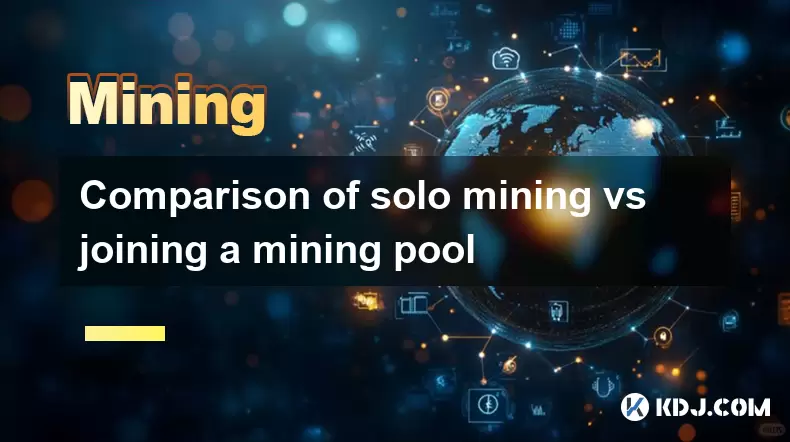
Comparison of solo mining vs joining a mining pool
Jul 05,2025 at 07:17pm
Understanding the Basics of Cryptocurrency MiningCryptocurrency mining involves validating transactions and adding them to a blockchain through computational power. Miners use specialized hardware, such as ASICs or GPUs, to solve complex cryptographic puzzles. Upon successfully solving these puzzles, miners are rewarded with newly minted coins. This pro...
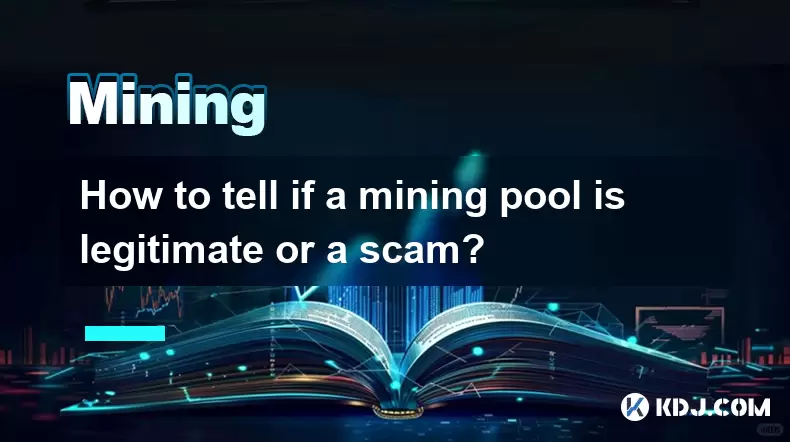
How to tell if a mining pool is legitimate or a scam?
Jul 03,2025 at 12:35pm
Understanding the Role of Mining PoolsMining pools play a crucial role in cryptocurrency mining by allowing individual miners to combine their computational resources and increase the likelihood of earning block rewards. A legitimate mining pool distributes rewards fairly, maintains transparency in operations, and has a strong community presence. Howeve...
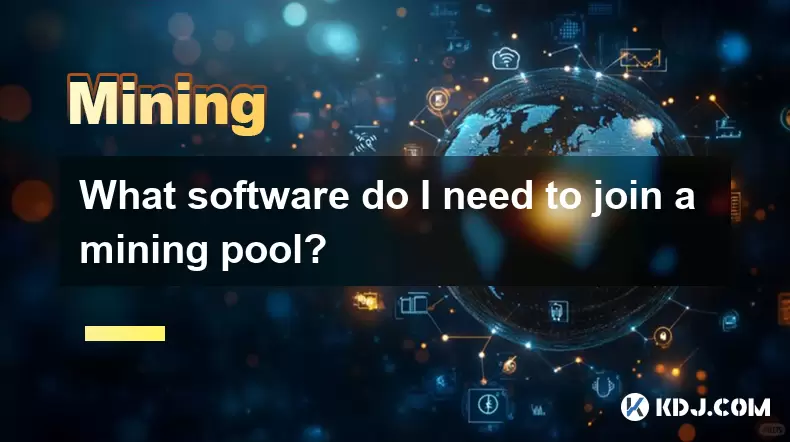
What software do I need to join a mining pool?
Jul 05,2025 at 07:32pm
Understanding Mining Pools and Their RequirementsJoining a mining pool is an essential step for many cryptocurrency miners who want to increase their chances of earning block rewards. Unlike solo mining, where you attempt to mine blocks alone, a mining pool allows multiple miners to combine their computational resources to solve blocks more consistently...
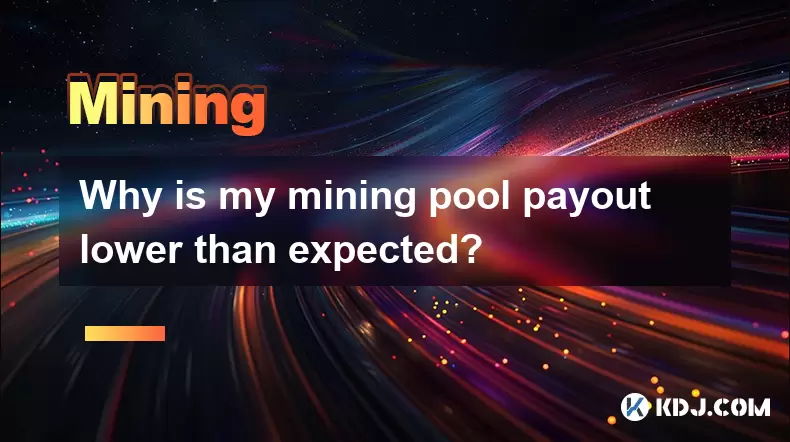
Why is my mining pool payout lower than expected?
Jul 03,2025 at 02:21am
Understanding Mining Pool Payout StructuresWhen you join a mining pool, it's important to understand the specific payout structure that the pool uses. Different pools operate under different reward systems, such as Pay Per Share (PPS), Proportional, Score-based, or Pay Per Last N Shares (PPLNS). Each method affects how and when miners receive their rewa...
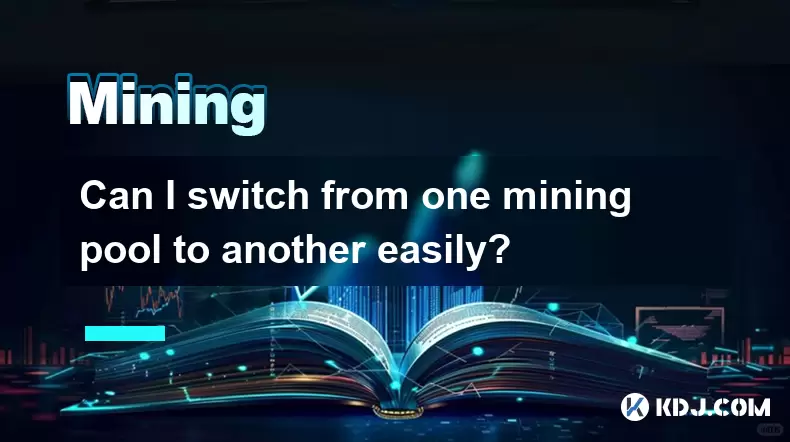
Can I switch from one mining pool to another easily?
Jul 05,2025 at 07:33pm
Understanding Mining Pools and Their Role in Cryptocurrency MiningIn the realm of cryptocurrency mining, mining pools play a crucial role in enabling individual miners to compete with large-scale operations. A mining pool is a group of miners who combine their computational resources to increase the chances of successfully mining a block. When a block i...

Is it safe to connect my hardware to a public mining pool?
Jul 05,2025 at 07:31pm
Understanding the Risks of Public Mining PoolsWhen considering whether it is safe to connect your hardware to a public mining pool, it’s essential to understand what a public mining pool entails. A public mining pool is a shared resource where multiple miners contribute their hashing power to increase the likelihood of solving a block and earning reward...

Comparison of solo mining vs joining a mining pool
Jul 05,2025 at 07:17pm
Understanding the Basics of Cryptocurrency MiningCryptocurrency mining involves validating transactions and adding them to a blockchain through computational power. Miners use specialized hardware, such as ASICs or GPUs, to solve complex cryptographic puzzles. Upon successfully solving these puzzles, miners are rewarded with newly minted coins. This pro...

How to tell if a mining pool is legitimate or a scam?
Jul 03,2025 at 12:35pm
Understanding the Role of Mining PoolsMining pools play a crucial role in cryptocurrency mining by allowing individual miners to combine their computational resources and increase the likelihood of earning block rewards. A legitimate mining pool distributes rewards fairly, maintains transparency in operations, and has a strong community presence. Howeve...

What software do I need to join a mining pool?
Jul 05,2025 at 07:32pm
Understanding Mining Pools and Their RequirementsJoining a mining pool is an essential step for many cryptocurrency miners who want to increase their chances of earning block rewards. Unlike solo mining, where you attempt to mine blocks alone, a mining pool allows multiple miners to combine their computational resources to solve blocks more consistently...

Why is my mining pool payout lower than expected?
Jul 03,2025 at 02:21am
Understanding Mining Pool Payout StructuresWhen you join a mining pool, it's important to understand the specific payout structure that the pool uses. Different pools operate under different reward systems, such as Pay Per Share (PPS), Proportional, Score-based, or Pay Per Last N Shares (PPLNS). Each method affects how and when miners receive their rewa...

Can I switch from one mining pool to another easily?
Jul 05,2025 at 07:33pm
Understanding Mining Pools and Their Role in Cryptocurrency MiningIn the realm of cryptocurrency mining, mining pools play a crucial role in enabling individual miners to compete with large-scale operations. A mining pool is a group of miners who combine their computational resources to increase the chances of successfully mining a block. When a block i...

Is it safe to connect my hardware to a public mining pool?
Jul 05,2025 at 07:31pm
Understanding the Risks of Public Mining PoolsWhen considering whether it is safe to connect your hardware to a public mining pool, it’s essential to understand what a public mining pool entails. A public mining pool is a shared resource where multiple miners contribute their hashing power to increase the likelihood of solving a block and earning reward...
See all articles

























































































